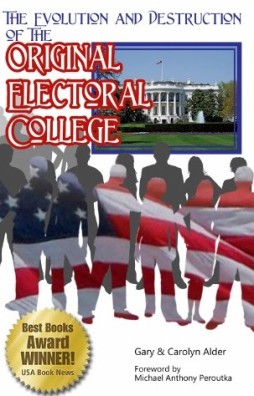The Constitution was structured to recognize and protect separate and sometimes conflicting interests.
Key 10 Analysis
Under the bicameral system of the Congress as designed in Article I of the original Constitution, the interests of the States, both large and small, were represented equally in the Senate, and the interests of the people were represented proportionally in the House of Representatives. This system provided a check to be sure that before laws could be passed both the states’ interests and the people’s interests needed to be satisfied.
In this statesman-like system the elected Representatives were able to consider the concerns of all of their constituents including women, children, minorities, rural areas and urban areas. They were to wisely consider the rights of all. Although the majority vote was sufficient for each interest (represented by a different house), the majority vote of the other interest would also be required. This type of structure tends to limit the number of laws as well as to provide better laws. This concept also tends to support the conduct of true statesmen. Establishing a different method of election for each position is very important in this type of representation.
Since the political parties took over the governance of the nation, we have lost this method of recognizing and making sure the separate interests are satisfied and protected. Whatever special interests please the political party that happens to be in the majority, rule the nation. It is the political party agendas which drive the direction of politics, and run the government. We have lost the wise deliberative discussion of critical issues required to maintain the sovereignty and freedom of the United States of America.
If we were to rewrite our Constitution to recognize separate interests today, we might have one house for Republicans and one house for Democrats. It would slow things down and there would be more deliberative discussions on issues if both interest groups had to concur before a bill could pass.
The Constitution was not designed for a party system, although it was hijacked by political parties early on. In his farewell address George Washington pleaded with the people, not to let the “spirit of party” take over our nation. The plan was that separate and conflicting interests could be recognized and represented and final decisions made which would protect all interests and the United States as a nation.
Quotes
The history of almost all the great councils and consultations held among mankind for reconciling their discordant opinions, assuaging [alleviating] their mutual jealousies, and adjusting their respective interests, is a history of factions, contentions, and disappointments, and may be classed among the most dark and degraded pictures which display the infirmities and depravities of the human character. If, in a few scattered instances, a brighter aspect is presented, they serve only as exceptions to admonish us of the general truth; and by their lustre to darken the gloom of the adverse prospect to which they are contrasted. In revolving the causes from which these exceptions result, and applying them to the particular instances before us, we are necessarily led to two important conclusions. The first is, that the convention must have enjoyed, in a very singular degree, an exemption from the pestilential influence of party animosities the disease most incident to deliberative bodies, and most apt to contaminate their proceedings. The second conclusion is that all the deputations composing the convention were satisfactorily accommodated by the final act, or were induced to accede to it by a deep conviction of the necessity of sacrificing private opinions and partial interests to the public good, and by a despair of seeing this necessity diminished by delays or by new experiments. James Madison Federalist 37 Jan 11, 1788
* * *


